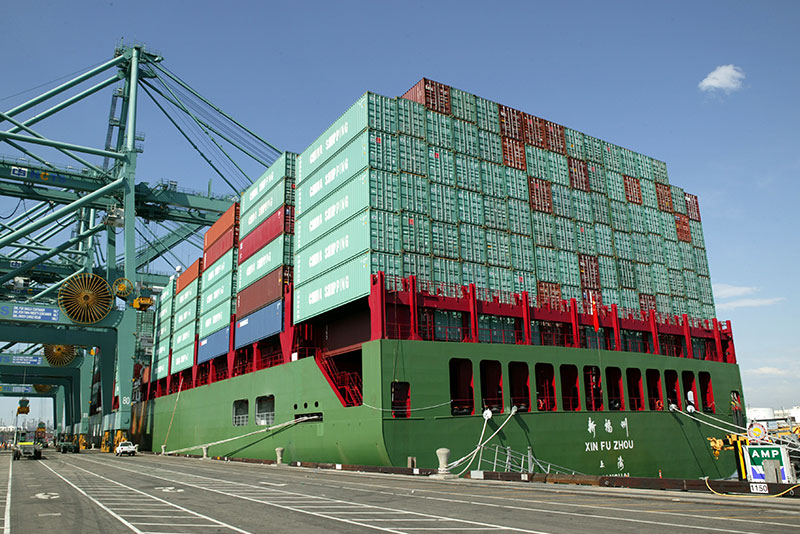Truck drivers are on the fence about new appointment systems meant to eliminate congestion outside terminal gates that are popping up in ports from Long Beach, Calif., to Newark, N.J.
That’s because they remember early appointment systems intended to allow drivers to pick up and drop off shipping containers that fell short of their intended outcome. Some were designed without input from the truckers that used them.
However, new appointment systems are taking different measures to be more effective, combining advances in technology and better collaboration among stakeholders.
As congestion builds at the nation’s ports, truck drivers are looking at these booking systems to relieve traffic and slash profit-eating delays. If truckers can save time at terminal gates and make fewer visits to the port, they can haul more cargo and make more money per trip.
The elimination of congestion at the nation’s ports is among today’s most crucial trade-related issues, according to the U.S. Federal Maritime Commission.
Terminals at ports in Seattle; Oakland, Calif.; Los Angeles; Long Beach; and New Jersey are among the first in the U.S. to adopt systems based on cloud-based services, mobile apps and other modern tech to book appointments for container pickups and deliveries.
Among the most recent is Washington United Terminals, which on Feb. 13 launched an appointment system for drivers picking up import containers at the port of Tacoma, Wash. The terminal reserves specific lanes for these trucks, according to the Northwest Seaport Alliance, which runs ports in Seattle and Tacoma.
Earlier in February, the Global Terminal Center at the Port of New York and New Jersey became the first East Coast terminal to require appointments for drivers dropping off or picking up import containers. In December, the TraPac marine terminal became the third terminal at the Port of Oakland to require appointments. Online appointment systems now cover 90 percent of container cargo moving through Oakland, Calif., according to a port statement.
First-generation appointment systems didn’t always work as intended. In the early 2000s, truck drivers missed 37 percent of appointments using the systems at the ports of Long Beach and Los Angeles primarily because of delays at the terminal, according to Thomas O’Brien, director of research, Center for International Trade and Transportation, California State University, Long Beach.
In addition, according to O’Brien, drivers felt the older systems didn’t improve their turn times, the time it takes a truck to enter a terminal, pick up an import container and exit the premises.
Along with being easier to use, the new appointment systems are also cheaper, which has made them more accessible to trucking carriers, O’Brien said.
The price of newer systems varies depending on the service. For example, Voyage Control – the tech vendor piloting a full-service appointment system at one terminal at the ports of Los Angeles and Long Beach port– charges an annual flat fee for the cloud-based service.
The cost is “tens of thousands of dollars, but not hundreds of thousands,” James Swanston, founder and chief executive for Voyage Control, told Trucks.com.
Some appointment systems are showing signs of a reduction in turn times. Among 13 container terminals at the ports of Los Angeles and Long Beach, an appointment system launched in 2016 at an automated terminal at the Port of Long Beach helped cut average visit time from 85 minutes to about 40 minutes, according to the Journal of Commerce.
However, the results have a lot to do with automation at the terminal in addition to the appointment system, according to Weston LaBar, executive director of the Harbor Trucking Association, or HTA, which represents truck carriers that service the Los Angeles and Long Beach ports.
Carriers serving the port have mixed feelings about the new system, LaBar said.
“The consensus is if they’re built the proper way, if it’s collaborative, there’s a real opportunity for everyone,” he said.
“Appointment systems are going to become more and more prevalent over time, that’s why it’s important to get the technology to fit the needs of the industry,” LaBar said.

Containers arriving at the port of Los Angeles. (Photo: Port of Los Angeles)
As the industry evolves, the stigma attached to appointment systems will take some time to wear off.
Early systems didn’t account for traffic delays or other problems that caused truckers to miss appointment windows, said Curtis Whelan, executive director of the American Trucking Associations’ Intermodal Carriers Conference, which included approximately 350 carriers that do ports work.
“The trucker had to be there within the window or lose his place, and if he showed up [on time] but the terminal wasn’t ready, [he’d have to] try again in an hour. There was no quid pro quo,” Whelan said.
Regardless of their past reputation, acceptance of appointment systems is gaining ground.
As ports and terminal operators scramble to manage logistical challenges brought on by ever-bigger container ships, they’ve come to appreciate that appointment systems and, by extension, truckers can help solve larger supply chain issues, O’Brien said.
“There’s a willingness to engage the trucking community sooner and in a much greater spirit of cooperation,” he said.
Appointment systems could make even more headway with critics if they were built to solve bigger port-wide problems.
By themselves, appointment systems that serve a single terminal or are limited to just container pickup, aren’t enough to solve all the challenges ports face, O’Brien said.
Some of these challenges include an ongoing chassis shortage as well as newer alliances between shipping lines that let vessels unload containers at one terminal and pick them up at another, he said.
A handful of ports are operating or testing such systems. The Port of New York and New Jersey runs a port-wide appointment system, also referred to as a virtual yard, electronic portal or e-portal, along with technology partner eModal, a division of Advent Intermodal Solutions.
HTA is also working with Voyage Control on an expanded appointment system at one Los Angeles and Long Beach port terminal that allows truckers to schedule dual transactions – dropping off an empty container and picking up a full one – or pick up a chassis.
Most appointment systems prevent trucking dispatchers from booking an appointment until a container is on the dock, however. Voyage Control’s service notifies terminals and trucking carriers three or four days in advance of when containers will be offloaded, Swanston said.
Voyage Control expects to switch from a pilot to full deployment of the system for import container delivery within six weeks, and hopes to use it to launch at other terminals at the port and elsewhere, he said.
The future could see the appearance of more booking systems based on data-based forecasts, according to LaBar. “The next evolution of these needs to bring predictive analytics that allow for a smooth transaction.”
Kerry Cartwright, director of goods movement for the Port of Los Angeles, said he’d welcome a universal appointment system to help coordinate activities of all 13 terminals operating at the port as well as freight forwarders and 15,000 trucks that roll through its gates each year.
Terminal operators recognize the need for a single, coordinated effort, Cartwright said.
“It’s a matter of them agreeing to something, and adopting uniform rules,” he said.
Source: Trucks
